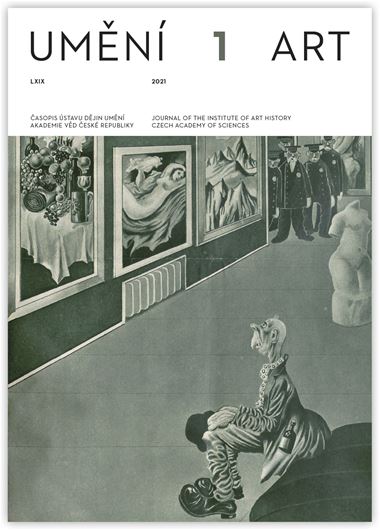Daniela Rywiková
Hanging at the Crossroads: The Crucifixion in the Prague Edition of Mater verborum
The manuscript known in the Czech environment as the Mater verborum and held in the Library of the National Museum in Prague consists of a set of three encyclopaedic dictionaries of which the most extensive is the Glossarium Salamonis (Mater verborum) compiled at the beginning of the tenth century. The Prague edition of the manuscript originated around 1240, and was quite certainly made in a Benedictine environment. Especially interesting are the historiated initials, unusual for this type of manuscript, and always present at the beginning of the appropriate letter of the dictionary. The unique iconography of the initial ‘T’abanus (fol. 169v) with Christ crucified on a cross decorated with the cut branches in the form of a ‘Y’ (forked cross, or Gabelkreutz) stands out among them. This is the first ever example of this iconography in central Europe. The initial demonstrates its connection with the text of the glossary which almost literally cites excerpts from The Etymologies of Isidore of Seville, while the scribe moreover added the entry (Tabernaculum corpus domini, tentorium vel papilionum) to Isidore’s text, inspiring the presence of the Crucifixion in the accompanying initial, but nevertheless not explaining the portrayal of the cross in the form of the Gabelkreutz. The reason for the choice of the less usual shape of the cross and the symbolic meaning of the Crucifixion is apparent from the iconographical concept of the decoration of the manuscript’s initials which visually and semantically ‘communicate’ with each other, in some cases even being semantically and visually ‘paired’ on the principle of biblical narration, analogy, parabolas and antithesis. This is evident in the initial ‘T’abanus with the Crucifixion, and its semantic and visual relationship to the initial ‘Y’e t z (fol. 191r) with the grape harvester collecting grapes symbolising the human soul and its salvation and the ape representing sensuality, sin and damnation. The initial introduces the text precisely, quoting a passage from the first book of Isidore’s Etymologies (De gramatica), which describes the symbolic meaning of the letter Y as a symbol of the crossroads of human life (bivium), with the right arm of the letter symbolising salvation and eternal life, and the left, damnation and death.
Daniela Rywiková: Daniela.Rywikova@osu.cz
Author's email:
Daniela.Rywikova@osu.cz
Full-text in the Digital Library of the Czech Academy of Sciences:
https://kramerius.lib.cas.cz/uuid/uuid:25669629-18fd-41d7-b2e6-0b2340449872
< back

